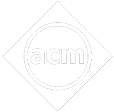- Written By
Jyoti Saxena
- Last Modified 25-01-2023
Area of Paths, Roads and Borders: Explanation and Examples
We have learnt that a plane figure, such as a rectangle, has a length and a breadth and is a two-dimensional shape. We have also learnt about the perimeter and area of closed figures like triangles, rectangles, squares, parallelograms. The amount of surface enclosed by a closed rectilinear figure is called its area.
Now think of the parks with crossroads and running tracks. Is it possible to find out the area of the crossroads and paths?? Yes, it’s possible to find the area of paths, roads and borders. In this article, we will learn to find the area of the crossroads, paths and borders.
Figures
Area and Perimeter
The area is the amount of space covered by a two-dimensional shape or surface. We measure the area in square units, or
In the figure below, if one square block is long and wide, we can find the area of the shaded region just by counting the number of squares in the region, i.e., squares.
So, the area is
The perimeter of a rectilinear figure is the distance around its boundary. Or we can say that the total length of the boundary of a closed shape or rectilinear figure is called its perimeter. So, the sum of the lengths of all sides of a rectilinear figure is its perimeter.
Area of Borders
We know to find the area of any rectilinear figure. Let us now understand the use of the area in measuring paths and verandahs with the help of an example.
Example: A rectangular field is by . A wide path is to be constructed along the sides outside the field. Find the area of the path.
Solution: In the given figure, the inner rectangle represents the given field, and the shaded region represents the path around it. So, we have,
Length of the outer rectangle
The breadth of the outer rectangle
Area of the inner rectangle
Area of the outer rectangle
We can see that the outer rectangle includes the area of the inner rectangle and the area of the path.
Thus, area of the path = Area of the outer rectangle – Area of the rectangle
Hence, the area of the path is
Area Between Two Rectangles and Two Concentric Circles
In our day-to-day life, we have observed that in parks or gardens, someplace is left around in the form of tracks, paths or in-between cross paths. We also come across some borders or frames, etc., attached to some objects. We need to find the areas of these paths or borders to find the cost of making them.
Let us look at a couple of examples to understand this better.
Example 1: The length and breadth of a rectangular park are and respectively. Each wide, two crossroads run at right angles through the centre and parallel to its sides. Find the cost of cementing the roads at the rate of per
Solution: The area of the cemented roads is shown by the shaded portion. These roads are rectangles and of dimensions and respectively.
We note that, while doing this, the area of square is taken twice, so we have to exclude it once.
Thus, the area of the roads Area of rectangle Area of rectangle Area of square
Therefore the cost of cementing the roads
Example 2: The radius of the bigger circle is . The radius of the smaller circle is What is the area of the shaded region? (Take
Solution: Area of the bigger circle
Area of the smaller circle
Area of the shaded region
Solved Examples – Area of Paths, Roads and Borders
Q.1. A sheet of paper is by A wide strip is cut from it all around. Find the area of the strip and the area of the remaining sheet.
Ans: In the above-given figure, the outer rectangle represents the sheet of the paper, and the shaded region represents the strip that is cut from it. The inner rectangle represents the sheet left after cutting the strip.
Area of the complete sheet Area of the outer rectangle
Length of the inner rectangle
The breadth of the inner rectangle
Area of the sheet left after cutting the strip=Area of the inner rectangle .
Area of the strip Area of the complete sheet Area of the sheet left after cutting the strip
Hence, the area of the strip is and the area of the remaining sheet is
Q.2. There are two concentric circular tracks of radii and respectively. Manu runs on the inner track and goes once around the track in minute seconds, while Dhruv runs on the outer track in minute seconds. Who runs faster?
Ans: Circumference of the inner track
Circumference of the outer track
Manu covers a distance equal to the circumference of the inner track in minute seconds, i.e., in minutes.
So the distance travelled by Manu in minutes
Therefore, the distance travelled by Manu in minute
Thus, the speed of Manu per minute.
Dhruv covers a distance equal to the circumference of the outer track in minute seconds, i.e., in minutes, i.e., in minutes.
Therefore, the distance travelled by Dhruv in minute
Thus, the speed of Dhruv per minute.
Since the speed of Manu is greater than the speed of Dhruv, therefore, Manu runs faster.
Q.3. A community park is in the form of a square of side 80 cm. A 4 m wide path runs inside it along its sides. Find the cost of repairing the path at the rate of per
Ans: Side of the bigger square
Area of the bigger square
Side of smaller square
Area of smaller square
Area of the path=Area of bigger square-Area of smaller square
Cost of repairing
Q.4. How many square tiles of side will be needed to pave a footpath that is wide and surrounds a rectangular plot long and wide?
Ans: Since the footpath is wide, the length of the outer plot and its breadth
Therefore, the area of the outer plot
The area of the inner plot
Thus, the area to be covered with tiles
Area of one tile
Hence, the number of tiles required to pave the footpath
Q.5. Find the area of the shaded circular path in the below-given figure. (Take
Ans: Two circles are given having the same centre. The width of the shaded region is
The radius of the inner circle
Therefore, area of inner circle
Now, the radius of the outer circle
Therefore, area of outer circle
Area of the shaded region
Summary
In this article, we first learnt the basic concept of area and also learnt to find the area, then we learnt to find the area of the borders, crossroads, paths etc. In addition to this, we also learned to find the area and circumference of the circular paths. And, lastly, we learnt to solve some examples based on finding the area of the crossroads, paths, circular tracks to strengthen the grip over the concept.
Learn About Area and Perimeter of Shapes
Frequently Asked Questions (FAQ) – Area of Paths, Roads and Borders
Q.1. How do you find the area?
Ans: The area of a closed figure is the amount of surface enclosed by it.
Q.2. What is the formula for the area of path?
Ans: Formula of the area of the path when it is rectangular in shape, subtract the area of the inner rectangle from the area of the outer rectangle.
Q.3. What are concentric circles?
Ans: Circles having the same centre are called concentric circles.
Q.4. What do you mean by the borders, crossroads and paths?
Ans: We have observed that in parks or gardens, someplace is left around in the form of tracks, paths or in-between cross paths. We also come across some borders or frames, etc., attached to some objects. Thus, this left out the place is referred to as borders, crossroads and paths.
Q.5. What is the perimeter of the path?
Ans: The perimeter of the path is the sum of the lengths of all its sides. The perimeter of a circle is called its circumference.
We hope this detailed article on the area of paths, roads, and borders helped you in your studies. If you have any doubts, queries or suggestions regarding this article, feel to ask us in the comment section and we will be more than happy to assist you. Happy learning!
















































